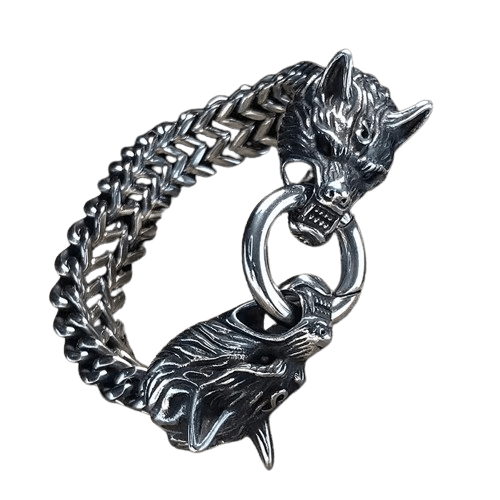Mjöllnir, Thor's hammer that shaped Nordic history
- min of reading
Summary :
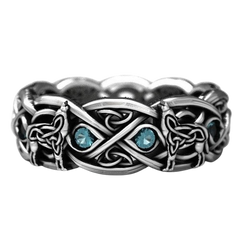
Nordic Wolf Celtic Ring
£25.53
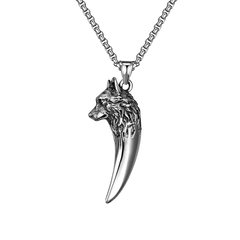
Wolf Head Necklace
£25.53
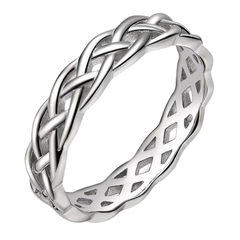
Celtic Entwined Ring
£28.99
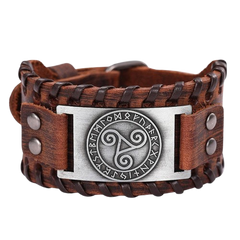
Celtic Triskel Bracelet
£25.53
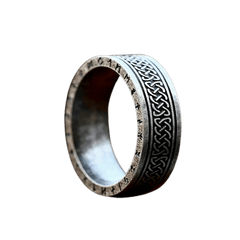
Viking Rune Ring
£28.99
In Norse mythology, the hammer Mjöllnir is a powerful symbol directly associated with Thor, the god of thunder. This legendary hammer is renowned for its destructive force, its protective power and its ability to return to its owner's hands with a simple gesture. But what do we really know about this Nordic emblem?
Thor's hammer, also known as Mjöllnir, has played a central role in epic tales of Norse mythology. Considered a tool that shaped the history of ancient Scandinavian peoples, Mjöllnir has become iconic in legendary tales and has also influenced popular culture across the world.
We will explore the origin of Mjöllnir, its deep symbolism, and its lasting influence on Norse history. We will also examine its impact on the beliefs and practices of Norse legends, as well as its importance in the representation of the god Thor himself.
Prepare to dive into the captivating world of Norse mythology and discover the fascinating secrets of Mjöllnir, the hammer that shaped Scandinavian history.
Introduction to Mjöllnir and its importance in Norse mythology
Thor's hammer, also known as Mjöllnir, has played a central role in the epic tales of Norse mythology. Considered a tool that shaped the history of the ancient Scandinavian peoples, Mjöllnir has become iconic in legendary tales and has also influenced popular culture across the world.
Thor's hammer is often described as a symbol of power and protection. According to legend, it was forged by dwarves and possesses extraordinary powers, including the ability to control lightning and the weather. Mjöllnir is also known for its ability to return to Thor's hand after being thrown, making it a fearsome weapon.
The Legend of Mjöllnir and Thor
The hammer Mjöllnir holds great significance in Viking culture. It is often associated with protection, fertility, and strength. The symbol of Mjöllnir was worn by Viking warriors as a talisman of protection. The hammer is believed to have the power to bless those who wield it and ward off evil forces.
The symbol of Mjöllnir is also closely linked to the religious beliefs and practices of the ancient Norse. It was often used in religious ceremonies and protective rituals. Mjöllnir was seen as a link between the gods and humans, and its use was believed to secure the favor of the gods and protection from evil forces.
The symbolism of Mjöllnir in Viking culture
The Mjöllnir hammer is often depicted as a double-headed hammer, with a short, thick handle. The details of its design vary, but it is usually decorated with intricate patterns and Viking symbols. Some Mjöllnirs were also decorated with gemstones or engravings depicting mythological scenes.
Crafting a Mjöllnir was a complex process that required exceptional craftsmanship. Viking blacksmiths used advanced techniques to create quality weapons and jewelry. Each Mjöllnir was unique and handmade, making it a highly valuable item.
Click this link or the image below to view our Mjöllnir Ring
The Craftsmanship and Design of Mjöllnir
The hammer Mjöllnir was Thor's main weapon in Norse legends. It is said that it could destroy mountains and giants with a single blow. Mjöllnir was also used by Thor to protect gods and humans from evil forces and to maintain order in the world.
In addition to its destructive power, Mjöllnir possessed mythical powers. Legends claimed that the hammer could control lightning and weather, and its bolts of lightning were capable of striking down Thor's enemies. Mjöllnir was also known for its ability to return to Thor's hand after being thrown, making it a formidable and invincible weapon.
Mjöllnir as a weapon and its mythical powers
Several Mjöllnir artifacts have been discovered in archaeological sites in Scandinavia. These artifacts offer valuable insight into the history and culture of the ancient Scandinavians. Some of the most famous examples include the Skåne Mjöllnir, a silver amulet from the Viking Age, and the Købelev Mjöllnir, a gold amulet discovered in Denmark.
These Mjöllnir artifacts are often associated with religious rituals and protective practices. They demonstrate the importance of Mjöllnir in the daily lives of the ancient Norse and its role in their spirituality.
Mjöllnir in Modern Pop Culture and Its Impact on the Nordic Revival Movements
The use of Mjöllnir symbols in modern society has been controversial. Some extremist groups have adopted the Mjöllnir symbol as a sign of racial supremacy, leading to negative associations with Nazism and other hate movements.
However, it is important to note that the symbol of Mjöllnir should not be equated with these destructive ideologies. For many people, Mjöllnir is primarily a symbol of pride in their Norse heritage and their attachment to Viking culture, without racist or hateful connotations.
Click this link or the image below to view our Viking Wolf Bracelet
Famous examples of Mjöllnir artifacts and their historical context
For those interested in Norse mythology and Viking culture, owning a Mjöllnir replica or piece of jewelry can be a way to connect with their heritage. Many artisans create high-quality Mjöllnir replicas that are faithful to historical designs.
It is also possible to find Mjöllnir-inspired jewelry, such as pendants or rings, which can be worn as a symbol of strength and protection.
The controversy surrounding the use of Mjöllnir symbols today
The hammer Mjöllnir is much more than just a symbol of Norse mythology. It embodies strength, protection, and connection with the gods. Mjöllnir shaped the history of the ancient Scandinavians and continues to influence the culture and spirituality of the Nordic peoples.
Whether one views Mjöllnir as a religious symbol, an icon of cultural pride, or simply an object of fascination, there is no denying that this legendary hammer has left a lasting mark on Norse history and beyond. Whether through replicas, jewelry, or artistic representations, Mjöllnir continues to capture the imagination and serve as a reminder of the powerful legacy of the ancient Vikings.
Collecting and owning Mjöllnir replicas or jewelry
Thor's hammer, also known as Mjöllnir, has played a central role in the epic tales of Norse mythology. Considered a tool that shaped the history of the ancient Scandinavian peoples, Mjöllnir has become iconic in legendary tales and has also influenced popular culture across the world.
According to Norse legends, Mjöllnir was forged by the dwarves, the master craftsmen of the underworld. It was created from the power of lightning, giving it unparalleled destructive force. This hammer also has a protective power, allowing its wielder to repel evil forces and defend the worlds of gods and men.
The symbolism of Mjöllnir goes beyond its mere appearance. It represents brute strength, justice, and protection. The hammer is often associated with fertility, as Thor was also considered the god of agriculture. Scandinavian farmers used Mjöllnir-shaped amulets to ensure good harvests and protect their land.
However, Mjöllnir's influence is not limited to its symbolic meaning. This hammer also played an important role in the religious practice of the ancient Norse.
Click this link or the image below to view our Odin Ring
Conclusion and Mjöllnir's Lasting Legacy in Norse History
In Norse religion, Mjöllnir was used in rituals and ceremonies to invoke the protection of Thor. The ancient Norse believed that the hammer had the power to bless marriages, cure illnesses, and protect warriors on the battlefield.
Priests and priestesses used Mjöllnir to communicate with the gods and gain their favor. According to ancient texts, the hammer was used to consecrate altars, purify sacred places, and invoke natural forces.
Mjöllnir was also worn as a symbol of faith and loyalty to Thor. Norse warriors often wore hammer-shaped amulets to ensure the protection of the thunder god during battle.






